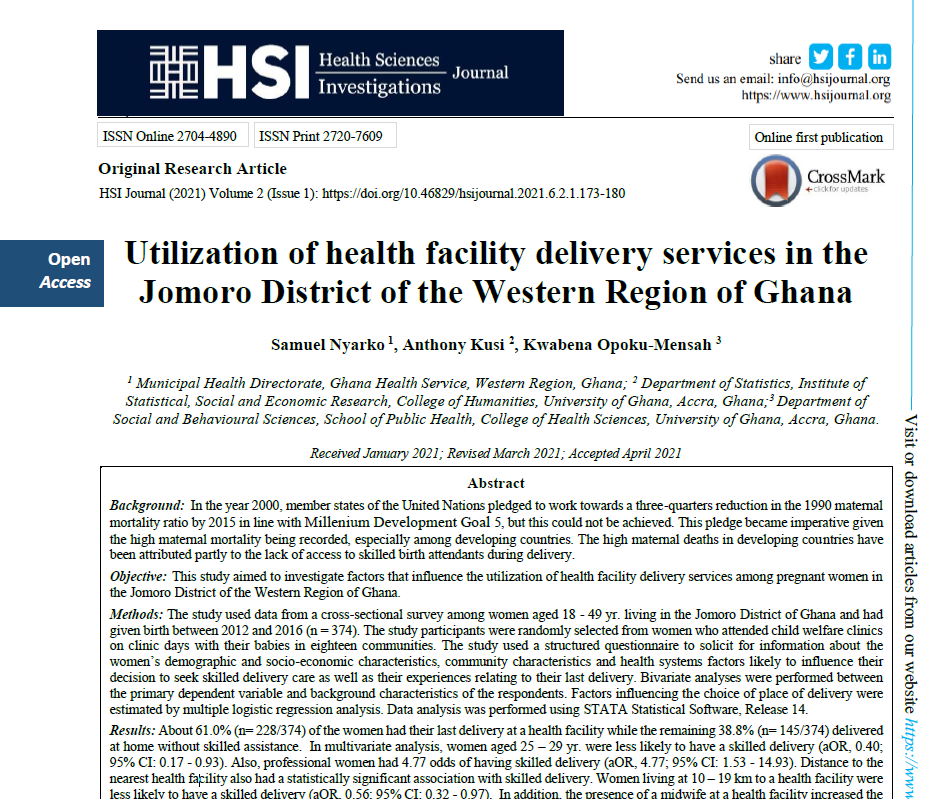Utilization of health facility delivery services in the Jomoro District of the Western Region of Ghana.
Barriers to skilled delivery in Ghana
Abstract
Background: In the year 2000, member states of the United Nations pledged to work towards a three-quarters reduction in the 1990 maternal mortality ratio of 385 deaths per 100,000 live births by 2015 but this could not be achieved. This pledge became imperative given the high maternal mortality being recorded especially among developing countries. The high maternal deaths in developing countries, to a large extent, have been attributed to the lack of access to quality skilled birth attendants during delivery. This study aims to investigate factors that influence the utilization of health facility delivery services among pregnant women in the Jomoro district of the Western Region of Ghana.
Methods: The study uses data from a cross-sectional survey among women aged 18-49 years living in the Jomoro district of of Ghana and had given birth in the last five years (n=374). The study participants were randomly selected from women who attended child welfare clinics on clinic days with their babies in eighteen communities. The study used a structured questionnaire to solicit for information about the women’s demographic and socio-economic characteristics, community characteristics and health systems factors likely to influence their decision to seek skilled delivery care as well as their experiences relating to the their last delivery. Bivariate analyses were performed between the primary dependent variable and background characteristics of the respondents. Factors influencing the choice of place of delivery were estimated by multiple logistic regression analysis. Data analysis was performed using STATA version 14 software.
Results: About 61.0% of the women had their last delivery at a health facility while the remaining 38.8% delivered at home without skilled assistance. The multivariate analysis shows that age of the pregnant woman, her ethnicity, educational status and occupation were significant determinants in choosing the place of delivery. Other significant factors included the distance to the nearest health facility and the availability of a midwife in the nearest health facility.
Conclusion: Interventions aimed at increasing the uptake of delivery care services to achieve the SDG’s target on maternal mortality must consider improving the socio-economic wellbeing of women in addition to removing the physical and health system barriers impeding access and utilisation of delivery care services.


